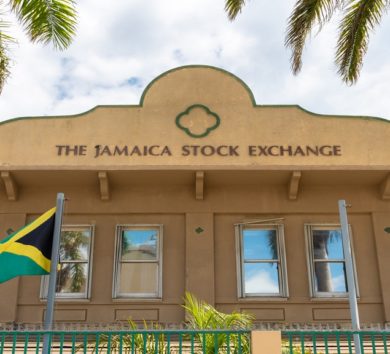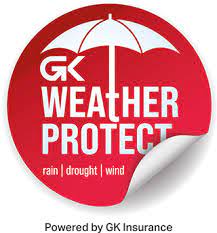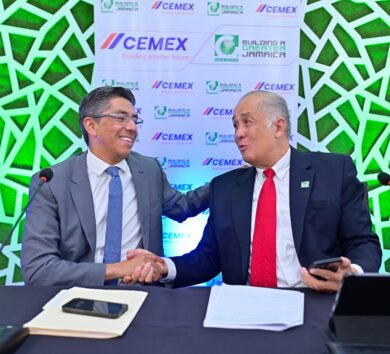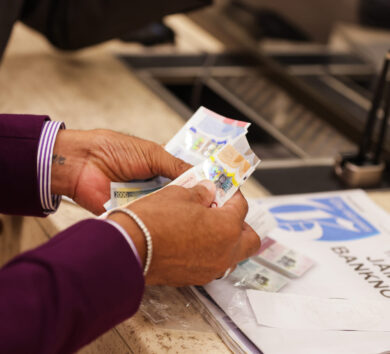

How can the integration of environmental, social and governance responsibilities lead to a brighter more desirable products and a renewal of the Caribbean fashion industry?

Over the past 50 years the fashion industry as a whole declined substantially throughout the Caribbean. Statistics are hard to get, but the following fragments illustrate the direction. In Barbados, employment figures in the fashion industry dropped from 868 persons in 1999 to 348 in 2008; in the Dominican Republic from 145,000 workers in 2000 to 41,000 in 2006; in Jamaica the number of employees dropped from 36,000 in 1995 to 18,000 in 2000. In Trinidad and Tobago the fashion workforce dropped from 7,000 in 1978 to 3,700 in 2005-8, and according to our estimates the number was unlikely to be higher than 1,700 in 2013 (out of a total labour force in TT of 665,700 at the time).
Even if the industry declined in size, it still plays an important role economically, socially, and, as is increasingly being recognized, environmentally. The specific elements and proportions vary hugely by country. Exports continue to play an important role for most in the Caribbean. In the case of TT our research indicates that 44% of garment manufacturers (surveyed for the TT Fashion Industry Strategic Plan in 2015) export to the Caribbean, 28% export to Europe, and 26% export to North America. While West Indian Sea Island cotton is a highly valued input grown in the region, especially in Barbados and Jamaica, and there are accessories produced using local raw materials, but most inputs are imported.

Recently accelerating trends
The world has become a lot more conscious of the long brewing environmental crisis and that no country is currently on track to achieve the UN SDGs by 2030. At the COP in 2018, major industry players signed up to the Fashion Industry Charter for Climate Action and that movement continues to grow. Consumer values are shifting across the world, and legislators and regulators tightening on the social and environmental consequences of fast and irresponsible fashion.

Fashion house Kimya Glasgow from St Vincent and the Grenadines.
Banks, private equity, institutional investors, development finance institutions are all responding to investor and societal demands; and implementing ESG measures to mitigate the risks of irresponsible behaviour in the organizations they invest in. The amount of financial capital that is available to be invested in organisations that are well governed and that have positive environmental and social impacts is increasing exponentially.
What are the implications?

Companies across the fashion industry have choices in responding to this. The majority are probably noticing these trends, but not sure how or if they can respond, and so continue with business as usual. Others may try to jump through new hoops in order to comply, but essentially stick to the existing markets and ways of doing things. Such a tick box exercise is adding costs but will not bring sustained advantages. What is ‘possible’ today, will become ‘should’ tomorrow, and ‘have to’ in a couple of years. So, everyone must catch up; and while the organizations’ impact will be less damaging, we need them to be also competitive, innovative, and produce good returns to all forms of capital, i.e. financial, human, social, and natural capital.

Four main avenues:
Success is likely to be found in any one or combination of the following avenues:
Consolidate local markets: According to Lisa Marie Daniel, CEO of FashionTT, the natural strategy of most apparel designers in the Caribbean is high quality, niche and boutique. Our key value proposition is to deliver differentiated premium quality products which are long lasting with minimal wastage. Low quality fast fashion imports maybe deemed to be more affordable but they come with ethical issues and environmental costs. It is quite possible that the hurdle local apparel designers need to cross in order to be able to demonstrate verifiable sustainability credentials is not that high – given their existing emphasis on high quality.

Transform the production system itself for efficiency and sustainability. Christopher Nathan, former director at CreativeTT and FIDC Board Member (Fashion Industry Development Committee) is a big advocate of advanced manufacturing technology (AMT) in the fashion industry; and has shown that AMT can enable Caribbean designers to produce individual items at a third of the cost in a sixth of the time, compared to traditional methods.
Work regionally and strengthen the collective fashion industry ecosystem. By combining the Caribbean Aesthetic with practical opportunities to produce more efficiently, and in environmentally and socially sustainable ways, strengthen the resilience and competitiveness of the industry. It is important to think of industry as a system, and to utilize the current disruptions to build back better, as Christopher Nathan emphasizes. Lisa Marie Daniel gives the example of the UTT Garment Production Facility “Made 868”, a collaboration between UTT and FashionTT. When it becomes operational in 2022, 300 local firms and up to 1000 regionally will be able to benefit by having all of their manufacturing needs catered to in line with international standards.
The Global Value Chain Investment Programme is one of the most successful elements to have emerged from the Strategic Plan for the TT Fashion industry. International value chains are more selective and sustainability standards are becoming an access criterion, not least because regulations in an increasing number of countries are now demanding it. Authentic and verifiable sustainability credentials will give regional firms a distinct and competitive advantage.
Common basis for success

All four avenues have key pillars in common. Sustainability credentials are not the result of shiny add-ons, but transformation of core value generation processes. That means that successful firms get to know their customers not only from the perspective of the next purchase, but how garments and fashion contribute to their wellbeing. Successful firms also develop the ability to understand their interaction with nature, and with the society of which they are a part.
This understanding is not only at the level of awareness, but involves purposeful, meaningful, and verifiable improvements. The key is to make actual and real improvements. There are many tools available in order to get started; some are fashion industry specific, others are, for example, SME sector toolkits. The most successful companies are able to certify their achievements, balancing purpose and profit (certified B-Corporations). That communicates trust, increases brand value, and reduces the danger of being caught “greenwashing” because people are looking!
- Dr Axel Kravatzky is managing partner of Syntegra-ESG Inc., vice-chair of ISO/TC309 Governance of organizations, and the co-convenor and editor of ISO 37000 Governance of organizations – Guidance.
Disclaimer: the views presented are those of the author and do not necessarily represent those of any of the organizations he is associated with.
Comments and feedback that further the regional dialogue are welcome at [email protected]om







Comments